about environments, says Nicole Weinstein.
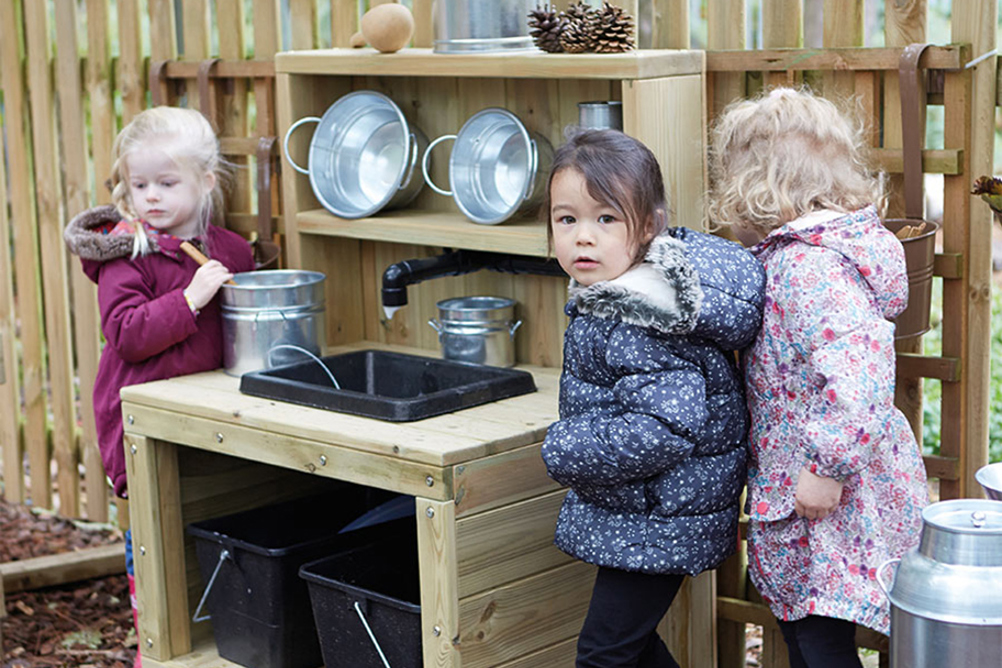
EYFS: Understanding the World The world - 'Children know about similarities and differences in relation to places ... They talk about the features of their own immediate environment and how environments might vary from one another.'
Children learn to make sense of their physical world and their community through opportunities to explore, observe and find out about people, places and the environment. Practitioners can build on this knowledge by taking them out for walks or bus rides in the local community - to the park, shops, places of work or local community buildings. Back at the nursery, they can recreate real-life experiences through role play or use open-ended resources and recycled materials to recreate built environments they have observed.
Julian Grenier, headteacher at Sheringham Nursery School and Children's Centre in Manor Park, east London, says, 'We feel it is really important that the children get out into the local neighbourhood and beyond, taking parents with us wherever possible. Many of the parents are at an early stage of learning to speak English and family life can sometimes be limited to just a few streets locally. This means the children are not really growing up as Londoners and British citizens.
'We always walk or use public transport and never book coaches, because we want families to be able to do the trip again themselves if they want to. We also spend time supporting parents to obtain Oyster cards to travel round London. Most of our trips are very local - to shops or the local park - and focused on buying fruit and vegetables or spotting print and numbers in the environment.
'We have worked with Newham's park rangers to create a forest school zone in Little Ilford Park and the children are really enjoying and learning from experiences there, like hunting for bugs, using saws, building dens and making a camp fire. We have also taken groups to the Tate Modern and the Natural History Museum, not only because of the richness of the exhibits and the stunning scale of the museums themselves but also because the children love to journey across London.'
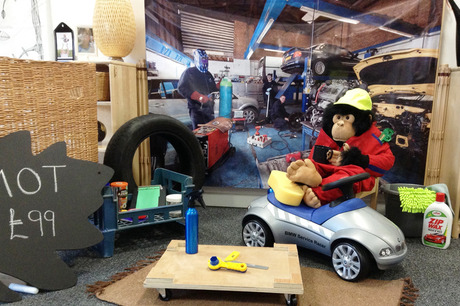
FIRST-HAND EXPERIENCES
The best way to introduce children to 'places' is to start with what is familiar to them. Early years consultant and parenting specialist Lena Engel says, 'Talk about their homes, their gardens and how they travel to school or nursery. Encourage them to think about the architectural differences of people's homes.
For example, do they live in a house, a bungalow, a flat or a maisonette? Who lives in their home and how many rooms do they have? If they have a garden, what grows there - trees, flowers and vegetables? And what can they find in the soil and on the plants?'
Discussions about these areas will give children a deeper understanding of the similarities and differences in the homes where we live. It will also help them develop empathy as they learn to listen to the experiences of other people, how they live and how they manage in different environments, such as not having the benefits of a garden or having to share a bedroom.
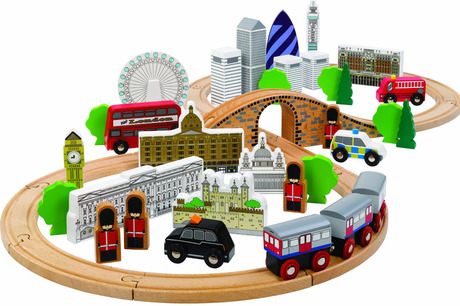
OUT AND ABOUT
Here are some examples of how to help children identify and become familiar with the places they live and go to nursery, and the wider community within them.
- Start exploring a sense of place with real visits to local shops and supermarkets and create a play environment in the classroom- for example, a food shop, a florist, a launderette or a cafe.
- Provide pictures and resources of places familiar to new children who are settling into the nursery to make connections between home and school life. For example, try asking for photos of their house, front door and places that are familiar to them and displaying them in the home corner.
- Engage girls and boys in building techniques by looking at the built environment and building methods and encourage them to build their own houses out of bricks made of clay and straw.
- Use children's stories such as The Three Little Pigs to emphasise the nature and strength of building materials.
- Create a route plan of the child's journey to nursery. For the older ones, use a survey to show the vehicles they used to get to school.
- Talk about the differences in living in the town and the country. This can involve discussion about farms and animals and high-rise buildings and businesses.
- A 'holiday bear', which goes on weekend trips to the country or trips to visit relatives abroad, is a good opportunity to talk about the different ways of life and traditions of others. Encourage families to take photographs and write postcards that can be shared back in the nursery.
- The seaside is a popular destination and creating a beach in the classroom works well for many settings. This also provides opportunities to talk about the different ways to get to places - by train, car or aeroplane.
- Use traditions, special events, music, cooking and food sampling to discover the different countries that children's families originate from. Look at these places on world maps and globes.
- Collect research books to extend the knowledge of the adults and the children and use stories to emphasise feelings and experiences and remind children about their own lives.
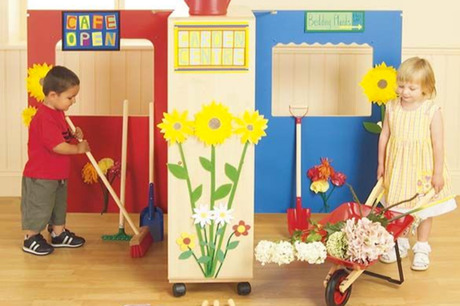
WHERE TO GO AND WHAT TO DO
It is great to have a purpose when taking children out into the local environment, whether it is a trip to Tesco or to an art gallery.
Ms Engel explains, 'A visit to the local shops is a good idea if the event is well planned and children are prepared - for instance, with a shopping list - and can actually buy something to take back to eat or cook at nursery or school. Take photos of the way there or back to show the route and illustrate it on a route map back at the nursery, with a time line. When visiting a pet shop or a hairdresser's, practitioners need to prepare a risk assessment on the environment and prepare the people who work there.
'Galleries are brilliant, but ensure the children and the gallery are prepared and that a member of staff is available to focus on two or three art works that will interest the children. If possible, buy some prints of those specific paintings or pieces of sculpture.
'Then back at nursery, remind children of what they saw and with the prints ask them to have a go at their own artwork inspired by each of the prints. Use paints, crayons, or clay and specific tools that would have been used by the original artist - and with their own artworks, create an art gallery display in the classroom.'
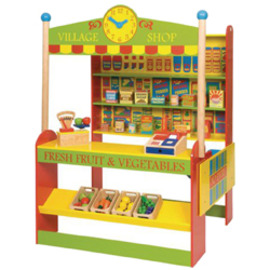
RESOURCES
Here are a selection of resources to help you build on children's visits and real-life experiences.
Role play
- Cosy Direct on 01332 370152 – transform your home corner into a dentist's surgery, hairdressers, garage, post office or greengrocer's with a pack of five Role-Play Backdrops (£50, or £29.95 individually). Accompanying resources include the Mechanics Trolley (£21.25), Real Clanking Workshop Tools (£30), Car Wash and Window Cleaner Set (£19), Posties Bag (£10.95), Hairdressing Kit (£14) and the High Street Sign Set (£39.99). Try using these resources with the Young Writer's Role Play Pack (£149.95).
- TTS Group – Outdoor Fuel and Car Wash Station (£499.95), Outdoor Wooden Sink (£499.95) or the Super Spaceship (£1,499.95) for exploring the wider world. See www.tts-group.co.uk.
- Hope Education – Pack Away Role-Play Cabinet (£239.95), Twoey Town Arcade Set - Multicoloured (£377.95) and the Multicultural Food Special Offer (£49.95). See www.hope-education.co.uk.
- YPO – see the Village Shop (£92.85) at www.ypo.co.uk.
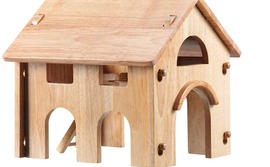
Small-world play
- Reflections on Learning – City of London Play Set (£35.95), Bee-Bot (£49.99), Busy Street Mat for Bee-Bot (£34.99) and Treasure Island Mat for Bee-Bot (£22.99). See www.reflectionsonlearning.co.uk.
- Wesco - Little Adventure Cases, (£52.10), which includes eight figurines and interchangeable backgrounds sold (£3.50 each), and Mini Shop Workbench and Mechanic Kit (£107.50). See www.wesco-eshop.co.uk.
- Yellow Door - a range of domestic small-world garden, farm and woodland scenes and global small-world scenes, including Africa and the Arctic. See also the Down on the Farm Scene Kit (£24.50) and the Wooden Tree Set, which demonstrates seasonality (£24). At www.yellow-door.net/small-world-habitats.
- TTS Group - see High Street Buildings (£34.95), Active World Town Scene Mat (£18.99), Diversity Family (£39.95).
- Hope Education - Dolls' House with Furniture (£169.95), Hospital Environment (£94.95), What Goes Where? Mats - In the Community Mat (£16.95).
- The Childminding Shop - Sensory Scenes, Woodland Discovery (£39), Cultural China (£39) and Clowning Around at the Circus (£39). See www.thechildmindingshop.co.uk.
- Cosy Direct -a wide range of tuff spot mats including the Seaside Tuff Spot Mat, the Quarry Tuff Spot Mat and the City Tuff Spot Mat (all £10.95). Dwelling houses from around the world include the Natural Delux Farm Barn (£45), the Small World African Hut (£6.79), Coconut Shell Houses (£2.99), Dolls Caravan with Accessories (£24), Small World High Street (£28.99), Real Life - Community Places (£15.79), Outdoor Road Ways (£18.99), and a Bridges and Tunnels set (£33).
- YPO - Activity Play Rugs in 3D: Mini City (£137.75), Complete Police Set (£81.30), Freight Train Set (£78.20), TOLO First Friends Farm Set (£100.30).
The built environment
- Cosy Direct – Builder's Shed (£285), Construction Site (£129), Highway Builder's Yard (£349), Lewis's Lightweight Softwood Bricks (£39.95), Builder's Set (£45), Mini Size Bricks 100 (£225), Giant Hollow Blocks (£387.50) and Build a Blocks Child-Sized Door (£89.99).
- YPO – City Blocks with Table (£215).
Around the world
- Play to Z – We're Sailing Down the Nile sensory tale (£60) contains a book and other artefacts, including reed flutes, wooden boats, a camel finger puppet, a wooden crocodile and papyrus. Other tales include the Babushka and the Galapagos. See http://playtoz.co.uk.
- Reflections on Learning – Map of the World Playmat (£79.99) and Children of the World Outdoor Map Play Mat (£89.99).
- Hope Education –What Goes Where? Mats - Around the World (£16.95), Children of the World puzzles (£29.95), Giant Foam World Map Puzzle (£59.95).
- The Childminding Shop – Globe Ball (£2.99), Multi-Cultural Puzzle: Children of This World (£8.99).
MORE INFORMATION
- Examples of projects 'further afield' in early years settings are described, illustrated and referenced to the EYFS in Making the Most of Outdoor Learning by Linda Thornton and Pat Brunton, Featherstone Press.
- Playing and Learning Outdoors by Jan White, Routledge
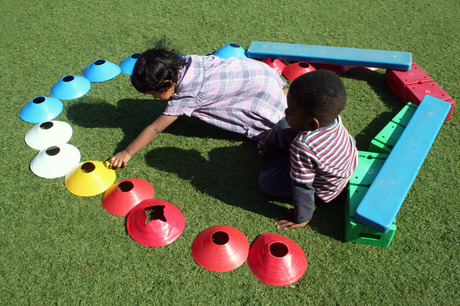
CASE STUDY: GREENFIELDS CHILDREN'S CENTRE
Children at Greenfields Children's Centre, a 60-place setting in Southall, London Borough of Ealing, gained a deeper understanding of dwelling places and the nature of homes around the world through a project that began with a keen interest in construction and evolved over several months into an understanding of the impact of natural disasters and our need for 'shelter'.
Ellie Larkin, head of centre, says, 'Through discussions in their philosophy groups, children became aware that individuals, and often whole communities, can lose their homes through storms, floods and fires and have to resort to constructing temporary shelters for comfort and protection. Children looked at images of people living in simple box-like constructions and tents made from fabrics and sticks and thought about what it might be like to live in small vulnerable spaces.
'We used the opportunity to link this with the Early Years Foundation Stage and talk about our understanding of homes, places and where people live. We considered the things that make a home and the nature of different homes and lifestyles. We asked, "What happens when people don't have homes?" and we talked about the children's own homes and their home comforts and what it would be like to not have a bed to sleep on or running water. This was very useful for developing the children's understanding of where they live in relation to others around the world.
'Through the development of their creative awareness project with artists-in-residence Rosie Potter and Kirstie Reid, from Wimbledon College, children were encouraged to think about what they would need to make a temporary home, exploring a range of recycled materials and the different ways, shapes and forms that might be employed to construct a durable shelter to withstand the elements.
'They produced some highly imaginative solutions, while trouble shooting a whole range of problems including structural collapse, inclement weather, space issues in respect of numbers of people wishing to inhabit the shelter and the nomadic potential for dismantling their structures and moving them on to another site.
'The project culminated in a trip to Littlehampton where we tested the children's theories by re-erecting the shelters they had made as a temporary installation on the beach, over one extremely windy day.









